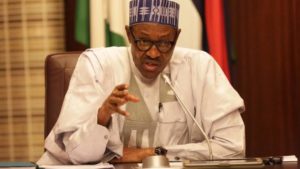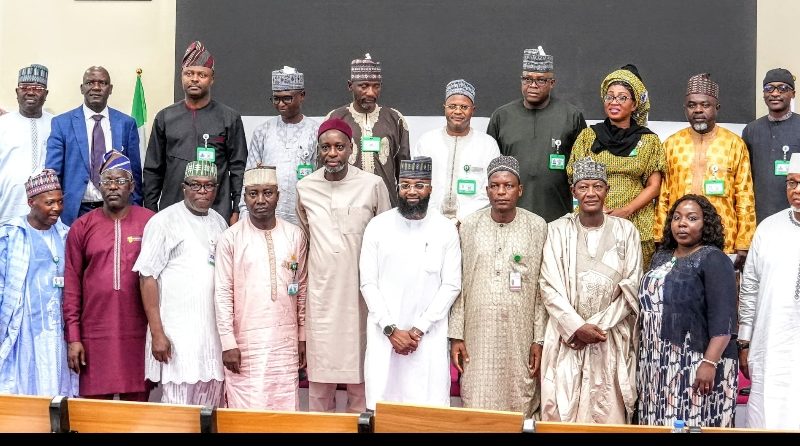
By Chioma Obinagwam
The recent release of the Gross Domestic Product (GDP) figures by the National Bureau of Statistics (NBS), where GDP growth expanded by 2.38 percent year-on-year (y/y) in the Fourth Quarter of 2018 (y/y in Q4-18) – the seventh consecutive positive reading, has been greeted with much accolades, particularly, from the presidency.
According to the report, on an annual basis, real GDP growth for the oil sector stood at 1.14 percent as against 4.69 percent recorded in the corresponding year of 2017.
Also, in the review period, the average daily oil production stood at 1.91 million barrels per day (mbpd). This was lower than the 1.95 mbpd recorded in the same quarter of 2017, and 1.94mbpd in Q3 2018.
On an annual basis, the non-oil sector recorded a growth rate of 2 percent in 2018, performing considerably better than 0.47 percent seen in 2017.
Despite a marginal improvement in the non-oil sector, there is no doubt that the fate of the economy still hangs on oil revenues, which currently accounts for 90 percent of our Foreign Exchange (Forex), as such, the need for diversification.
What is ineffective diversification?
It is common knowledge that both the present and past administrations have made concerted efforts to diversify the economy due to the numerous disadvantages a mono-economy poses.
An understanding of diversification, would produce a clearer picture of ineffective diversification.
Hence, diversification, in economics, implies the act or practice of manufacturing a variety of products, investing in a variety of securities, selling a variety of merchandise, and so on, so that a failure in or an economic slump affecting one of them will not be disastrous.
Mr. Marcel Okeke, a staunch proponent of effective diversification, also the former Chief Economist/Group Head, Research & Economic Intelligence Group at Zenith Bank Plc, said that ineffective diversification is when a country’s export is insufficient to offset its import.
“Diversification is effective only when what we export is sufficient to pay for our imports but in Nigeria the diversification we’re crying about is not sufficient to pay for our imports. There’s an imbalance. Thus, it is ineffective diversification,” he explained.
This implies that a country could be engaged in diversification but it may not be effective.
Therefore, ineffective diversification is when a country does not make enough from its exports to offset what it pays on its imports, like in the case of Nigeria, it begins to suffer from trade deficits or a negative Balance of Payment.
Evidently, Nigeria’s current Balance of Payment, which entails the difference between the value of a country’s imports and exports for a given period, deteriorated to a deficit of $4.5 billion in the third quarter of the year (Q3’18) from $503 million surplus it achieved in the second quarter of the year (Q2’18) implying that the nation’s import exceeded export by $4.5 billion during the quarter.
With Nigeria’s Balance of Payment, already in the negative, the consequences are grave.
This deficit is coming despite the present administration’s (Muhammadu Buhari’s) concerted efforts to boost production in other sectors of the economy, particularly, in the area of agriculture aimed to break the jinx of mono-economy.
It is on record that the Federal Government (FG) has recently instituted new policies and programmes all in a bid to change the status quo.
Notable among them are the Anchor Borrowers’ Programme (ABP), where, through the support of the CBN, is intended to create a linkage between anchor companies involved in the process of selecting key agricultural commodities and small holder Farmers.
Moreover, recent reports from the Rice Farmers Association of Nigeria (RIFAN) showed that its members have the capacity to produce 24 million metric tonnes of rice annually.
It is also worrisome that despite this claim by RIFAN, Nigeria imported three million metric tonnes of rice in 2018, which is 400,000 metric tonnes more than the quantity of the product imported in 2017, according to the 2018 United States Department of Agriculture World Markets and Trade Report.
Being Nigeria’s staple food, there’s no gainsaying that there is still more work to be done in the area of rice production.
The manufacturing sector too, which is another component of diversification, has received some attention from the government through the Made In Nigeria for Exports (MINE) and the Special Economic Zones (SEZs) projects.
These projects aimed at making the sector contribute at least 20 percent to GDP by 2025, is somewhat a facade as the sector currently contributes only 9.5 percent to GDP.
The Trader Moni, an empowerment scheme of the Federal Government created specifically for petty traders and artisans across Nigeria, is also constrained by lack of integrity among the beneficiaries.
The way forward
Essentially, in tackling the problem of ineffective diversification, there is need for the government to be Keen on implementation of policies rather than paying lip service to them.
There should be accountability both on the part of the government and the citizenry (mostly beneficiaries of empowerment programmes).
Consistency and continuity of policies that have already started yeilding positive results irrespective of the government in power, should be encouraged.
Impact assessment and audit of projects already rolled out is necessary to determine the success level and identify where adjustments would be made.
Competence should also be the focus; ensuring that the round peg should be in the square hole.
While it is noteworthy that the present administration, instituted an Economic Recovery and Growth Plan (ERGP) in 2017, Okeke argued that a development plan is the pancea for Nigeria’s ineffective diversification.
Buttressing, he said, ‘This economy is suffering from what we call the ‘Dutch Disease’. For any economy, it is better for the government to have a “development” plan than a “growth” plan. A development plan gives you a wider view of the economy whereas a growth plan gives you a narrow view. It only focuses on the growth indicators and not the economy in its entirety.’
From the pundit’s argument, the ERGP, which is hinged on restoring growth, investing in people and building a globally competitive economy, is not all encompassing.
Moreover, recent data mined from the World Poverty Clock which is a tool used to monitor progress against poverty globally and regionally, shows that Nigeria now has over 87 million people living in poverty as at July 2018, making it the poverty capital of the world.
Even with a soaring unemployment rate as high as 23.1 percent as at Q3, 2018; haemorrhaging external reserves currently at $43.17 billion; rising inflation at 11.44 percent; mounting infrastructural deficits, in a it is indeed, not yet Uhuru (freedom) for Nigeria’s economy.






